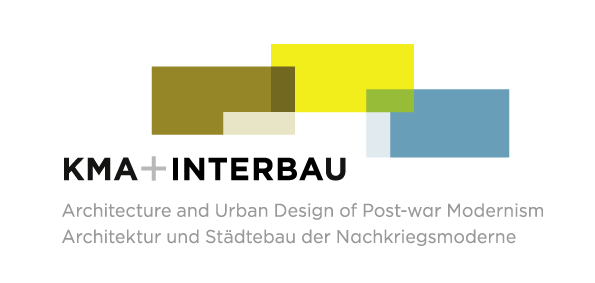Announcement by the Standing Conference of the Ministers of Education and Cultural Affairs (KMK): Decision on the World Heritage nominations
On 4 December 2023, the Conference of Culture Ministers passed its resolution based on the recommendation of the Advisory Board. Unfortunately, it is not in favour of our proposal. There are also no provisions in this tentative procedure. Many committed and tireless people, together with the State Monuments Office and many others from the Berlin administrations, had hoped for a positive vote in favour of the major proposal for Berlin’s post-war modernism. We very much regret that this has now not materialised. On the other hand, our second proposal, the Waldsiedlung Zehlendorf, has been approved by the Advisory Board and the Conference of Culture Ministers. Berlin will therefore have an addition to the tentative list.
Press release (in German)
20231204_Pressemitteilung_KMK_Tentativliste
World Heritage Proposal 2021
With the current World Heritage proposal “Berlin East West East. Architecture and Urbanism of Post-war Modernism“, Berlin wants to break new ground and bring to the fore a period that has so far received little attention on the World Heritage List: The heritage of reconstruction that emerged in the opposition and cooperation of East and West in Berlin after 1945 and was noticed by the whole world.
Not least due to the great commitment of the residents, the renewed application process was able to move forward: For example, the first citizens’ workshop took place in the Hansa Quarter in autumn 2020, and various formats such as the area patrons and the digital dialogue have become successfully established. The application process is also being intensively discussed in politics and administration. The participation of all is still needed for a successful application.
Source: Landesdenkmalamt Berlin
Documentation for the 2014 application
The “double Berlin”: Interbau 1957 and Karl-Marx-Allee on the way to becoming a World Heritage Site
Since the reunification of the two German states and a paradigm shift in the reception of modernity as well as in the urban planning criteria, the Hansaviertel and the buildings on Karl-Marx-Allee have increasingly been assessed without bias. The Karl-Marx-Allee, which has been a listed building since 1990, has been recognised as a “festive city boulevard” and its architecture as more modern than before. (1) The Hansaviertel has also been a listed building since 1995, but there have also been counter-movements in the meantime. As a result of the “Planwerk Innenstadt” (City Centre Plan) drawn up by Peter Strieder, the Senator for Urban Development, proposals were formulated for the area to be redensified. (2) In 2007, Hans Stimmann, former Senate Building Director of Berlin, argued that post-war modernism should not be placed under World Cultural Heritage. (3) In the same year, the year of its 50th anniversary, a large number of events emphasised the multi-faceted qualities of the Hansaviertel. (4)
In this discussion environment, civic commitment led to the initiative of including the Hansaviertel and Karl-Marx-Allee on UNESCO’s World Heritage List. The plans were decisively promoted by the Bürgerverein Hansaviertel e.V. together with the Corbusierhaus e.V. and the Hermann Henselmann Foundation and finally presented to the Berlin Senate. In 2012, the Senate decided to nominate Karl-Marx-Allee and the Hansaviertel for the German Tentative List of the UNESCO World Heritage List. On 1 February 2013, an application was submitted to the Standing Conference of the Ministers of Education and Cultural Affairs of the Länder in the Federal Republic of Germany and the UNESCO bodies for the joint application of the two building ensembles. In the justification, the applicants deviate from the long-standing reception of the two ensembles as developments taking place side by side and rather point out the interdependencies, i.e. no longer “coexistence” but “co-evolution”. (5) To support their argumentation, the applicants organised the colloquium “Coevolution of Modernity. Karl-Marx-Allee/ Interbau 1957”. (6)
In April 2014, the International Advisory Board (7) had decided on the application. In its recommendations to the Standing Conference of the Ministers of Education and Cultural Affairs on the updating of the German Tentative List, it selected 9 applications from 31 without taking Karl-Marx-Allee / Interbau 1957 into account. Although the Advisory Board appreciated the idea of the application, the Outstanding Universal Value OUV was “not sufficiently apparent to it”. However, since architecture from the second half of the 20th century represented an “underrepresented category” on the World Heritage list, the Advisory Board encouraged the applicants to “continue researching the topic”. (8) The parties involved in the application now use the time until the next submission in 2022 to prepare a new application in which the State of Berlin and the Berlin Senate will appear as applicants. In preparation for this, the 31st Berlin Memorial Day 2017 dealt with “Das doppelte Berlin 1957–1987…2017”(9) The publication “Karl-Marx-Allee und Interbau 1957. Konfrontation, Konkurrenz und Koevolution der Moderne in Berlin”, edited by Jörg Haspel and Thomas Flierl in 2017, also pursues the idea of co-evolution.
Dr. Sandra Wagner-Conzelmann
